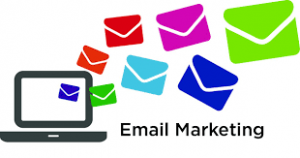
Your business’ email list is like treasure waiting to be discovered. All you need to do is brush a little dust off, and you’ll see how much it can help your business. To start getting the most value make sure your email list is both continually growing, and keeping your customers engaged with meaningful content and offers.
Email marketing has one of the highest returns on investment of any marketing strategies, an average of $44.25 ROI (from Salesforce.com), but more than anything it’s a game of numbers. The more people on your email list, the better your chances are at making a conversion and staying profitable.
To put it simply, if you have a conversion rate on your website of 20 percent, but you only have 10 people on your email list, you’re only going to get two customers to make a purchase. With an email list of five thousand customers and the same conversion rate though, you’re more likely to have thousand sales. Bigger lists make email marketing much more interesting.
Even if you have a big email list, you’ll need new customers coming in to keep your list fresh. You can keep customers signing up to your lists by making it as easy as possible. Let customers sign up for your email list in your store, on your website, and even on your social media pages. You can also boost the number of signups by offering an incentive, like a contest, a special discount, or even exclusive products only available to email subscribers.
No matter how engaged your customers are, there will be those who aren’t interested in buying from you. These customers are likely to unsubscribe from your list or start ignoring your emails, which is part of your expected churn. Churn is another reason to keep new customers subscribing to your list, to replace the ones that are leaving.
Customers, both old and new, are much more likely to buy from your business if they’re engaged in what you’re saying. Make sure only to send emails that are both useful and interesting to customers. Sending emails customers want means you’ll stay away from sending spam.
Another way to keep your customers engaged is to segment your list into different types of customers. Segmentation means you can tighten your messaging and keep the topic focused on what those particular customers want. For example, only sending new product emails to customers that have purchased your old products. You’re able to make messages more specific and speak to individual customers on a more intimate level.
To start nurturing more value out of your email list, take a look at the types of customers on your list. Of all the customers, what percentage are new versus old, which have purchased from you and who has never opened an email from you.
Once you’ve given your list a check, then you can start segmenting your audiences and creating emails geared towards those specific groups. At the same time, start creating more opportunities for customers to sign up for your email list to spawn more list growth. Soon you may have a email list overflowing with value.

